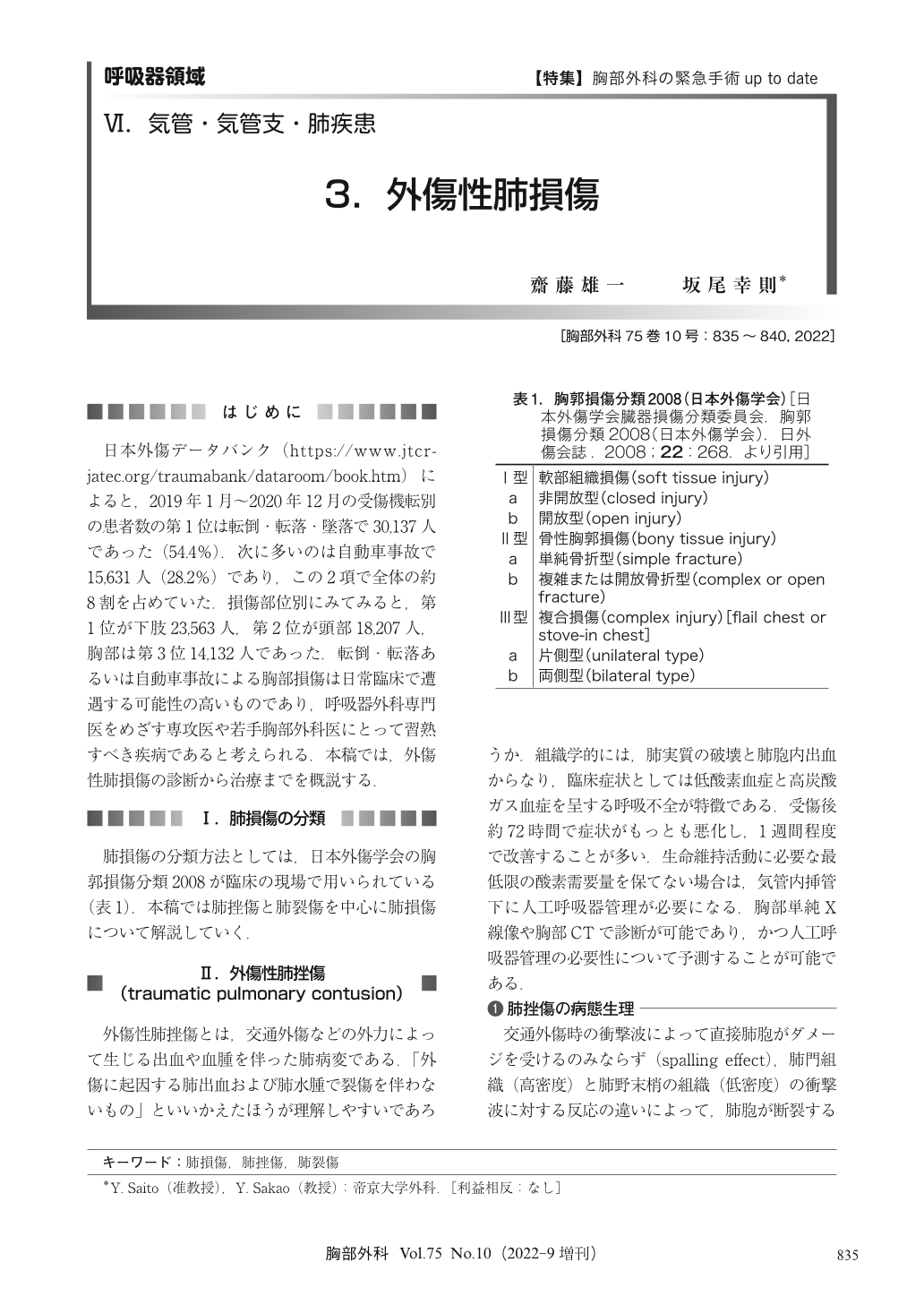Japanese
English
- 有料閲覧
- Abstract 文献概要
- 1ページ目 Look Inside
- 参考文献 Reference
日本外傷データバンク(https://www.jtcr-jatec.org/traumabank/dataroom/book.htm)によると,2019年1月~2020年12月の受傷機転別の患者数の第1位は転倒・転落・墜落で30,137人であった(54.4%).次に多いのは自動車事故で15,631人(28.2%)であり,この2項で全体の約8割を占めていた.損傷部位別にみてみると,第1位が下肢23,563人,第2位が頭部18,207人,胸部は第3位14,132人であった.転倒・転落あるいは自動車事故による胸部損傷は日常臨床で遭遇する可能性の高いものであり,呼吸器外科専門医をめざす専攻医や若手胸部外科医にとって習熟すべき疾病であると考えられる.本稿では,外傷性肺損傷の診断から治療までを概説する.
Thoracic injuries are significant causes of morbidity and mortality in trauma patients. Traumatic pulmonary contusion and/or laceration are often observed in patients with chest trauma, explosion injuries or a shock wave associated with penetrating trauma. A pulmonary contusion is an injury to the lung parenchyma without actual structural damage. As a result of damage to alveoli and capillaries, it results in leakage of blood and other interstitial fluids across the alveolar-capillary membrane into lung tissue and alveolar space. Since oxygenated air can not enter into fluid-filled alveoli, hypoventilation and decreased perfusion by reflux vasoconstriction result in hypoxemia and hypercapnia. Pulmonary laceration is a lung injury with disruption of the architecture of the lung, while pulmonary contusion does not. There is almost always concurrent pulmonary contusion, and pneumothorax, hemothorax, or hemopneumothorax. In addition, pulmonary laceration can be a cause of forming a cyst or hematoma, which usually disappears over a period of weeks or months. However, pneumatocele can occur in some cases when lacerations are enlarged with air-filled cavity. It is important for thoracic surgeons to understand pathophysiology of traumatic lung injury, and to know the diagnosis and treatment.

© Nankodo Co., Ltd., 2022


